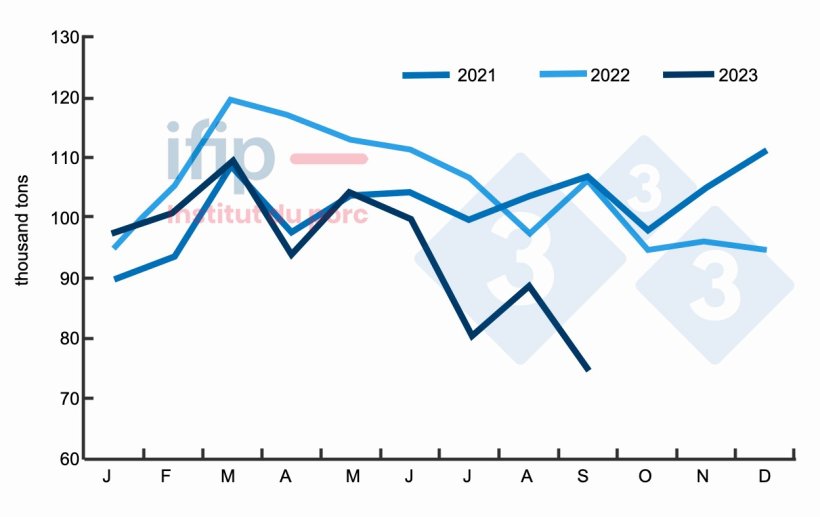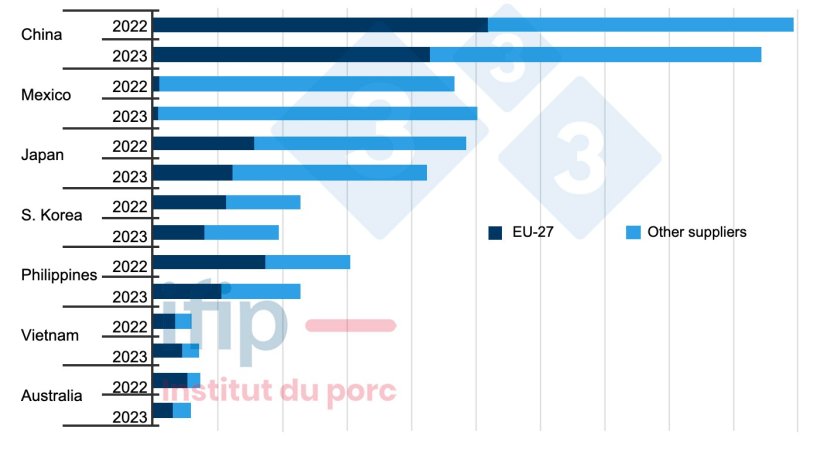Apart from the decrease in European exports to China, European exporters also face a weakening of sales to other Asian markets, which demand more sophisticated and high-value-added pork products.
In 2023, Japan and South Korea were affected by significant inflation. In the third quarter, consumer food prices rose by 9.4% in Japan and by 4.5% in South Korea compared to 2022. This uncertain economic context has led to a drop in consumer demand, especially in the restaurant industry, a sector that requires imported products.

This is why in the first eight months of the year, imports of pork products fell by 12.5% year-on-year for Japan and by 14.1% for South Korea. Europeans were the hardest hit by the weakening of purchases from these two markets. On the other hand, Brazilian exporters, which previously had little presence in these Asian countries where demand for processed products is stronger than in China, gained market share.

Japanese imports (thousand tons; excluding live pigs). Source: IFIP based on Eurostat customs data, TDM.
In 2023, the export market was marked by the loss of European market share in many countries, competing with Brazilian and American origins.
At the root of the EU's loss of competitiveness are price differences between producing areas and the decrease in European production. This context is compounded by an unfavorable economic environment for purchases by the main global importers, which slowed world trade in the third quarter.
Outside Asia, growth drivers for European exporters are limited because they benefit little from the dynamism of Mexican demand. The United States accounts for 83% of Mexico's supply, followed by Canada (13%), Brazil (2%), and finally Spain (1%). In Australia, demand has fallen (-21%) and only European volumes are affected (-45%). Other suppliers are consolidating their positions (+41%), especially the United States.
Despite the fall in European pork production, the export market is responding to the challenge of balancing carcasses and the valorization of all pork products. Like the Brazilians and the Americans, European exporters are exploring an essential diversification of their markets outside Asia or Latin America.

Major world importers and their suppliers (thousands of tons; excluding live; cumulative 9 months). Source: IFIP according to Eurostat customs, TDM.






